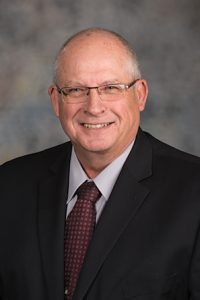Additional state aid for certain school districts fails to advance
School districts that rely heavily on property taxes would receive additional state aid under a bill debated by lawmakers May 4.
Under LB454, as introduced by Sen. Curt Friesen of Henderson, a school district would be eligible for a property tax stabilization payment if its property tax requirement — defined as the difference between the district’s needs and the amount of state aid it receives — exceeds 70 percent of its needs for the school year.
The state Department of Education would determine the payment amounts beginning with the 2021-22 school fiscal year. Payments would be distributed in 10 roughly equal amounts beginning in September and ending in June of each school fiscal year.
Friesen said approximately 60 percent of Nebraska school districts receive 10 percent or less of their needs in state aid, forcing them to rely on property taxes to fund their operations. Although his proposal would not reduce property taxes, he said, it would address this funding disparity.
A Revenue Committee amendment, adopted 28-6, would replace the bill. Under the amendment, a school district’s property tax requirement would have to exceed a smaller percentage of its needs each year in order for the district to qualify for a stabilization payment, from 70 percent in school fiscal year 2021-22 to 55 percent for school fiscal year 2024-25 and after.
Unlike the original bill, the amendment would not reduce the valuation of agricultural and horticultural land for the purposes of school district taxation.
Friesen said the amendment would direct approximately $95 million in additional state aid to 189 school districts in its first two years of implementation. The amount of aid would grow in later years as more districts qualify for the payments, he said.
Albion Sen. Tom Briese supported the bill, saying it would address an unfair distribution of state aid. He said the Omaha Public Schools district receives approximately $5,500 in state aid per student compared to $85 per student at a school in his district.
Briese suggested amending Friesen’s proposal to require districts to reduce their property tax asking by the same amount as their stabilization payment. He said this would ensure that the additional state aid results in property tax relief for residents in that district.
Sen. Lou Ann Linehan of Elkhorn opposed LB454. She said school districts have rejected past proposals that would have tied additional state aid to a cap on their property taxing authority.
Rather than send additional state aid to schools in an effort to reduce property taxes, Linehan said, senators instead should focus on comprehensive school funding reform.
“We do need to fix the school formula but not by little nicks and picks,” she said. “We need to do the whole thing, and the state needs to step up and do more of the job and take it off the backs of the property tax payer[s].”
Also in opposition was Bellevue Sen. Carol Blood. She said she had “grave concerns” about LB454 because it does not identify a source of state revenue for the proposed stabilization payments.
Sen. Justin Wayne of Omaha introduced an amendment that would end the state’s school funding system on July 1, 2022. He said this would create a deadline by which the Legislature must create a new system. The amendment failed on a vote of 21-14.
LB454 failed to advance to select file on a vote of 23-12. Twenty-five votes were needed.


